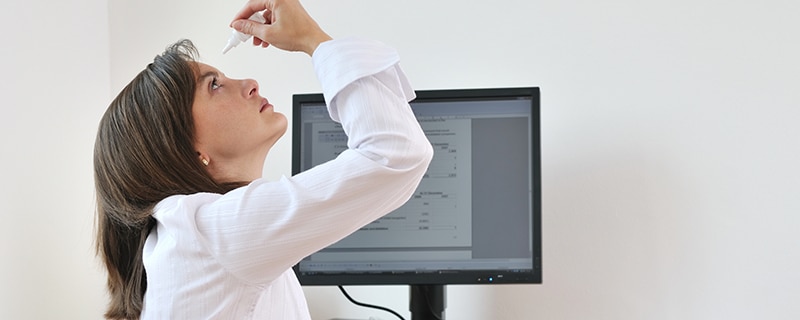Dry Eye Treatment – Springfield MA

Healthy eyes consistently produce tears that lubricate the eye and keep the eye’s surface smooth and clear. When the eyes are unable to produce enough tears to maintain clear vision, this condition is known as “dry eye.”
At Papale Eye Center, we treat dry eye with a variety of options to find the best solution for you.
At Papale Eye Center, our ophthalmologists can diagnose dry eye syndrome with a simple eye exam or tear test. We may recommend any number of treatments, from eye drops to tear conservation.
What is Dry Eye?
Blinking our eyelids spreads a film of tears across the eye. These tears keep the eye’s surface smooth and clear. These tears are made up of three layers:
- An oily layer — This layer is the outside of the tear film. It keeps the tears from drying too quickly.
- A watery layer — This is the middle layer and makes up most of what we see as tears. This layer washes away particles that don’t belong in the eye.
- A mucus layer — This is the inner layer and it helps spread the watery layer over the eye’s surface, keeping it moist. Without mucus, our tears wouldn’t stick to the eye.
Dry eye occurs when the eyes simply don’t produce enough tears, or when the consistency of the tears isn’t correct.
What are the Symptoms of Dry Eye?
If your eyes feel scratchy and irritated, or if you are experiencing a stinging or burning sensation and excess tearing, you may be suffering from dry eye syndrome. These are common symptoms of dry eye:
- Eyes feel like they are stinging or burning
- Eyes feel scratchy or gritty as if something is in your eye
- Eyes are red or irritated, especially when in the wind
- Contact lenses are painful
- You have an overproduction of tears (this seems counterintuitive, but the excess production is a reaction to the dry eye)
What Causes Dry Eye?
The most common cause of dry eye is age. Hormonal changes, especially in women after menopause, cause the eyes to produce fewer tears.
Other causes:
- Being in smoke, wind, or dry climate
- Looking at a computer for a long time
- Using contact lenses for a long time
- Blepharitis (swollen, red eyelids)
- Taking certain medications, such as blood pressure medications, beta blockers, and sleeping pills
- Certain diseases such as rheumatoid arthritis
- Having LASIK surgery
Treating Dry Eye
There are a variety of dry eye treatments we use at Papale Eye Center. These include the prescription of artificial tears, blocking tear ducts to keep the tears you are producing in your eyes longer, and managing the causes such as avoiding hair dryer use, humidifying winter air, etc.
